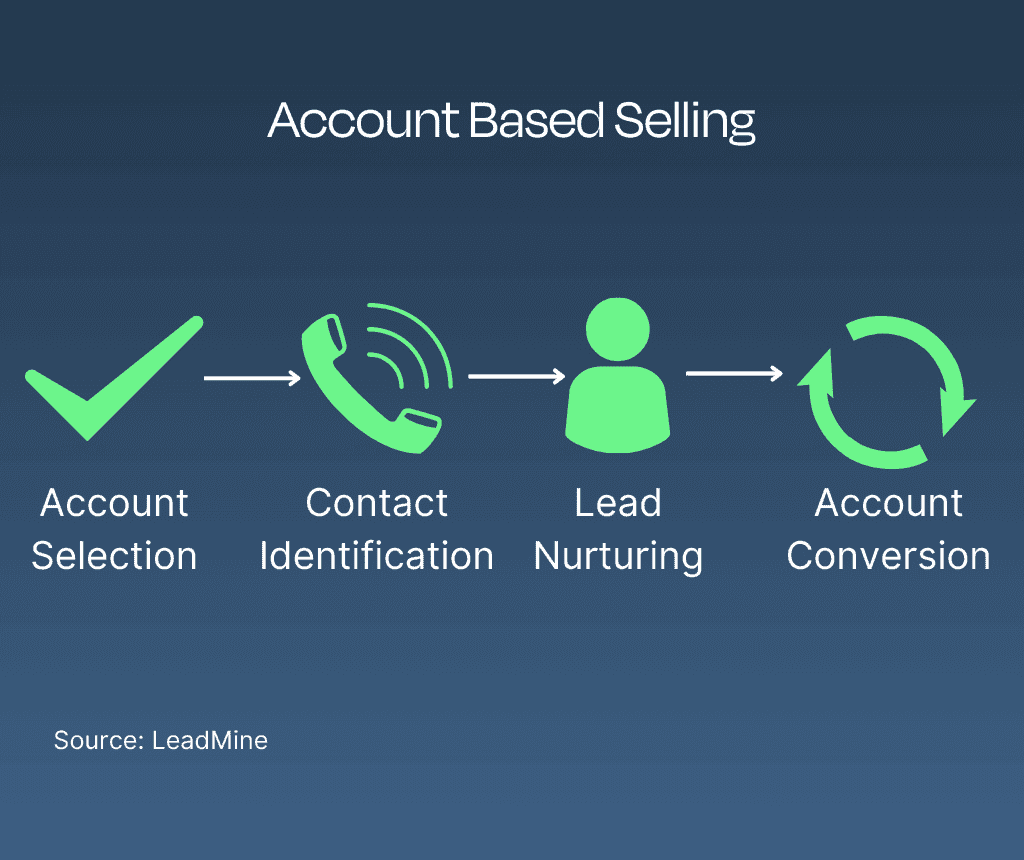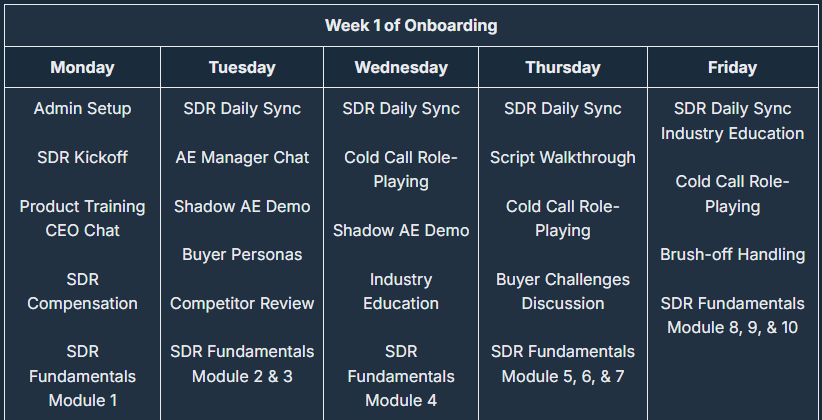
Aleksi
An SDR team is in charge of building a pipeline for your sales team. Qualifying leads, building relationships, and helping you grow your customer base.
Do you need an SDR team? Why are they important?
In this article, you can learn why you need an SDR team. According to the 2022 SaaS Account Executive Report by The Bridge Group, 81% of account executives use SDR teams for their operations.
What is a Sales Development Representative?
A Sales Development Representative (SDR) is a sales professional who focuses on building a pipeline with outbound sales activities or converting inbound leads to sales opportunities. These activities include prospecting, qualifying leads, and setting up meetings for account executives (AEs).
SDRs are responsible for identifying potential customers and contacting them through various channels. They nurture these prospects until they’re ready to speak with a salesperson. SDRs play a crucial role in the sales process by generating new business opportunities and helping to fill the sales pipeline.
Importance of an SDR Team
An SDR team is important because they’re vital for the growth of your business. They generate new leads and opportunities to increase the customer base and generate sales.
According to 2023 data from Sales Insights Lab, 55% of generated leads come from outbound activities as opposed to 27% from inbound activities. This data is important to keep in mind as you develop an SDR team for your company.
SDRs excel at researching potential clients and identifying those most likely to engage with your products or services. These make them a vital asset for growth and revenue generation.
Here’s how an SDR team can benefit your company:
Lead Generation: SDRs actively pursue new leads through outbound sales strategies.
First Point of Contact: They serve as the initial touchpoint for potential clients.
Relationship Building: SDRs nurture relationships with prospects to ensure a smooth transition to AEs for deal closure.
Revenue Growth: Their efforts contribute to expanding your customer base and boosting revenue.
Closing Key Deals: SDRs play a crucial role in closing important deals. They guide prospects through the sales pipeline.
In essence, having an SDR team is essential for driving revenue growth and ensuring your company’s success in the competitive market.
Furthermore, here are other reasons why an SDR team is important for your B2B company.
Sales Pipeline
The main reason why SDR teams are important is that they’re responsible for making the sales pipeline. A sales pipeline is a visual representation of the stages that a customer goes through during the sales process.
The purpose of a sales pipeline is to track the progress of leads through the sales process, identify potential bottlenecks, and forecast future sales revenue. Here are the common parts of a sales pipeline:
Prospecting: The initial stage where prospects are identified and qualified as potential customers.
Qualification: The stage where prospects are further evaluated to determine their fit for the company’s products or services.
Needs Analysis: The stage where the salesperson conducts a thorough analysis of the prospect’s needs and requirements.
Proposal: The stage where a formal proposal or quote is presented to the prospect that outlines the products or services and their pricing.
Negotiation: The stage where the salesperson negotiates with the prospect to address any concerns or objections and finalize the deal terms.
Closing: The final stage where the sale is closed, and the prospect becomes a customer.
Follow-up: While not always considered a separate stage, follow-up is a critical part of the sales process where the salesperson maintains contact with the customer to ensure satisfaction and explore additional opportunities.
Sales and Marketing Alignment
An SDR team collaborates with the marketing team to create a road map to ensure they have clear and aligned objectives. These two departments must work together to align strategies and processes.
Sales and marketing alignment is critical for overall success and revenue growth. Here are some key aspects that you should keep in mind:
Clear Communication: Regular communication between the SDR and marketing teams is essential to ensure alignment. This includes sharing insights, feedback, and updates on campaigns and leads.
Shared Resources: Both teams should have access to shared resources like customer data, content, and sales and marketing tools.
Feedback Loop: A feedback loop should be established to gather insights from both teams on what’s working well and what areas need improvement. This helps to continuously optimize strategies and processes.
How to Train Your SDR Team?
Choose a Clear Strategy
Before hiring SDRs into your team, you have to establish a B2B sales strategy that fits your business model.
The two types of strategies are lead-based and account-based sales. These two strategies vary in processes and concepts.
Lead-Based Strategy
A lead-based strategy is an approach that focuses on generating and qualifying leads to identify prospects. The team works to nurture leads through the sales funnel. They provide them with information and guide them through to make a decision.
This type of strategy is great for industries with large markets that make up small accounts. Here are key points about lead-based sales:
Volume-Oriented: This involves generating a high volume of leads through cold calling, email marketing, and advertising.
Shorter Sales Cycles: It typically has shorter sales cycles compared to account-based sales. The focus is on quickly moving leads through the funnel.
Less Personalization: Lead-based sales may involve less personalized outreach compared to account-based sales, as the focus is on reaching a large number of leads.
Lead-based sales can be effective for businesses looking to quickly scale their customer base. However, it may result in lower conversion rates and less engagement compared to account-based sales.
Account-Based Strategy
Accoun-based sales (ABS) is a strategic approach to B2B sales that focuses on identifying high-value target accounts and tailoring sales and marketing efforts to engage with them.
Here’s an infographic that shows you the process of ABS.

Furthermore, this type of strategy is good for competitive markets with large accounts. You can use account-based marketing methods as your marketing activities. Here are key points about account-based sales:
Targeted Account Selection: This involves identifying and selecting accounts based on criteria like company size, industry, and revenue potential.
Personalized Outreach: ABS emphasizes personalized outreach. It uses tailored messaging and content to address their specific needs and pain points.
Longer Sales Cycles: This typically involves longer sales cycles because it focuses on building relationships and trust with prospects.
Another thing to keep in mind is that ABS has two key performance indicators (KPIs) that you need to measure. These are:
Customer Acquisition Costs (CAC): The total cost to acquire a new customer. This cost includes all marketing and sales expenses associated such as advertising costs, sales commissions, and marketing campaigns.
Average Contract Value (ACV): The average value of a single contract or deal with a customer over time. It’s calculated by dividing the total value of all contracts by the number of contracts.
Have a Good Onboarding System
When onboarding newly hired SDRs, you need to have an efficient training plan to kickstart their work in your company. There are different onboarding strategies for you to follow. You can implement the one that fits the needs and pace of your sales team.
Here’s a sample two-week onboarding system from Vouris:


Use Sales Tools to Boost Productivity
Sales tools are a great way to boost productivity for your SDR team. These tools can help streamline and automate different administrative tasks.
Additionally, sales tools are great for increasing productivity because they allow your team to focus on nurturing leads. According to a 2020 McKinsey report, more than 30% of sales activities can be automated with technology. Here are some tools that your SDR team can use:
CRM System: Use CRM systems to track leads, manage customer interactions, and automate tasks like email follow-ups and scheduling.
Sales Automation Tools: Use sales automation tools to automate repetitive tasks such as data entry, lead scoring, and outreach.
Prospecting Tools: Use prospecting tools to find and qualify leads using criteria such as company size, industry, and revenue.
Email Tracking and Analytics: Use email tracking and analytics tools to monitor the effectiveness of email campaigns, and track opens and clicks.
Sales Enablement Platforms: Use sales enablement platforms to provide SDRs with access to sales collateral and training materials.
Develop a Positive Sales Culture
A healthy and positive sales culture is a great environment for your SDR team to grow and thrive. You have to make sure to curate a team that aligns with your company’s values and goals.
Moreover, you can build a great sales culture by doing the following:
Set Clear Goals and Expectations: Clearly define sales goals and expectations for SDRs as well as provide regular feedback on their performance.
Encourage Collaboration: Foster a collaborative environment where your team can share and learn from each other.
Provide Ongoing Training and Development: Offer continuous training and development opportunities to improve their skills.
Recognize and Reward Achievements: Acknowledge and reward SDRs to boost morale and motivation.
Promote Work-Life Balance: Encourage a healthy work-life balance by offering flexible work arrangements.
Lead by Example: Demonstrate leadership qualities such as integrity, empathy, and resiliency to inspire and motivate your SDR team.
Provide Opportunities for Advancement: Offer opportunities for career advancement to motivate SDRs to excel in their roles.
SDR Metrics
SDR metrics are data that you can measure to make data-driven decisions for your sales goals. These metrics fall into two categories which are inbound and outbound. The data and the figures below are from the 2022 Sales Development Report by Operatix.
Input Metrics
SDR input metrics are KPIs that track the effectiveness of lead-generation efforts. These metrics help assess the quality of inbound leads, the efficiency of the sales process, and the overall impact on revenue.
Here are some input metrics that SDRs need to keep track of:
Number of calls
Number of sent emails
Number of scheduled meetings
According to data from Operatix, SDRs can handle on average 15 leads per day. These leads span from demos, inquiries, or meetings. Moreover, the data suggests filtering them through qualifications like:
Company Size: Is the prospect’s company the right size? Is it within your industry?
Location: Is the prospect’s company within a serviceable region?
Job Position: Is the prospect within the proper department and job level to be influential in making a decision?
Output Metrics
SDR output metrics are KPIs that measure future opportunities like appointments and demos. These metrics help assess the efficiency of prospecting efforts and the quality of outbound leads.
Furthermore, here are some output metrics to take into account:
Number of future meetings
Sales accepted opportunities (SAOs)
Revenue
Additionally, here’s a sample breakdown of SDR productivity that you can use as a baseline for your team. This is the baseline expectation of productivity levels for SDRs. It takes into account average callbacks and reply rates. Lastly, it considers an average 20% dropout rate for scheduled meetings.

SDR Teams are Crucial for Success
SDR teams are vital for your company’s sales development and enablement. You can use these concepts and implement them when you’re developing your sales team. By following these suggestions you can create a solid team.


